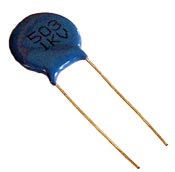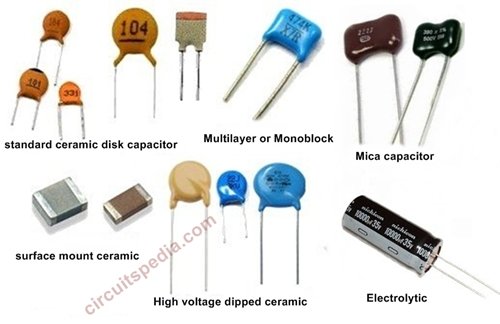

#0.05 uf capacitor code chart how to#
How to read a Ceramic capacitor with Numeric coding.Ĭommon Temperature Coefficient Codes (Ceramic) CodeĬommon Temperature Coefficient Characteristics (Ceramic) Temperature Coefficient

The 3gives the vibration grade 3 tells us 20g at 10 to 2,000 hz for 12 hours (1 is 10G at 10 to 55 Hz for 4.5 hours)Ĭog or NPO refer to caps that don't have any temperature drift (at least in theory.) Gives us our temperature range of -55 to 85 ☌ from table 5 Tells us from table 2 that this is a 10% part Is the Military voltage code from table 6 Is the case code - DM is a dipped case style CM would be a molded case styleĬharacteristic code tells us it doesn't have a drift specified (from table 4) This next one is a Military code example: Tells us the leads are crimped where a S would tell us they are straight. Is the DC working voltage in hundreds of volts (EIA only) thus 500V Is the capacitance tolerance code as given in table 2 above thus J is a 5% part Is the multiplier thus, this is a 470pF part The R is a decimal point when used (not often) theįirst two digits form the significant value and the third Is the case size code - if anyone asks I will put up a table for this Is a dipped case style CM would be a molded case style The first one can be recognized as the EIA because it starts with an R. There are two more number systems seen on caps. There are some Capacitor colour codes - the last dot is the tolerance code where brown is +/-1% red +/-2% as in the resistor colour code with two exceptions black is +/- 20% and white is +/- 10% going backward the three dots to the left of the tolerance dot form the value in pF There will be two or three more colour dots before the value but they mean different things about temperature range and coefficient depend which one of three systems is used. 22 uF) cap with a low temperature rating of -10 deg C a high temperature rating of +85 Deg C and a tolerance of +22%,-56%. Example a 103J is a 10,000 pF with +/-5% toleranceĮxceptions: There is sometimes a letter-number-letter (like Z5U) code that gives additional information.Įxample. Tolerance code is given by a single letter.

Multiplier (this times the first two digitsĮxample: A capacitor marked 104 is 10 with 4 more zeros or 100,000pF which is otherwise referred to as a 0.1uF capacitor.

Capacitor Speak - milli, micro, nano, pico,ġ milli Farad (or any other unit) is 1/1,000th or. an extra digit might be indicating an ESR value. Most of the time the last digit tells you how many zeros to write after the first two digits, but this is not ALWAYS the case. An example: 47 printed on a small disk can be assumed to be 47 Pico-Farads (or 47pF).ģ Numbers: The first two are the 1 st and 2 nd significant digits and the third is a multiplier code. Larger capacitors, like electrolytic, have the value printed on them clearly, such as 10uF, but smaller types often have just 2 or three numbers on them.Ģ Numbers: These are read as Pico-Farads. This is assuming the capacitor you are replacing is not damaged beyond the point of a reasonably accurate reading. Grab an LCR or Capacitance meter, read the value of the capacitor you wish to replace. Solen SCR Tin Foil Polypropylene (SM Range) Solen SCR Metaliaed Polyproylene (PB Range) WES Components do not stock every line of capacitors listed here.


 0 kommentar(er)
0 kommentar(er)
